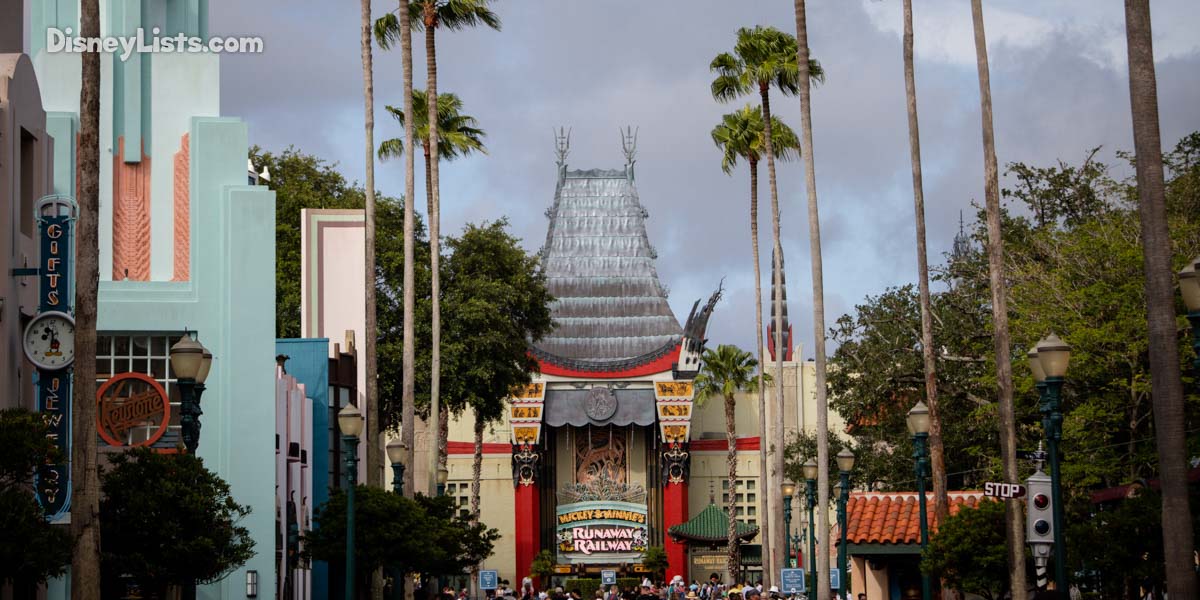Obscure References to Disney History at Walt Disney World

The history of the Walt Disney Company is a very storied one and features more than just cartoons and theme parks. In fact, Walt Disney and the company named after him would be intertwined with the history of Hollywood, as well as instrumental in the creation, development, and advancement of animation, filmmaking, theme parks, and technology. As a group that considers themselves Disney fans first and Disney employees second, Imagineers often pay homage to the company’s past by including details that are often missed by the casual guest.
1 – Holly-Vermont Realty at Disney’s Hollywood Studios
After spending the morning in the hot Florida sun, practically swimming through the dense humid air, nothing sounds better than a frozen Coca-Cola or lemonade. As you stand in line at Peevy’s Polar Pipeline, located on the Echo Lake-side of Keystone Clothiers, your eyes wander across the facade of the building. A large sign is hanging in a window above and to the right of the kiosk advertising office space for rent. At first, this doesn’t register as out of the ordinary, until you remember you are standing in a theme park and not the real Hollywood. A door below the sign identifies this space as Holly-Vermont Realty of Hollywood and Beverly Hills. This is in reference to an actual real estate company from which Walt and Roy Disney rented space in 1923. Shortly after signing their first contract with New York distributor Margaret Winkler for a series of films known as the Alice Comedies, the Disney brothers signed a lease to rent space behind this LA realty company on Kingswell Avenue. This occupancy was short-lived, however: the Disney Bros. Studio would move to a more permanent location with the opening of the studio on Hyperion Avenue three years later.
2 – Granny’s Cabin at One Man’s Dream
There aren’t many things at Walt Disney World that Walt Disney personally worked on or put his hands on, mainly because the resort didn’t open until nearly five years after his death. As part of the 100 Years of Magic Celebration that took place at Walt Disney World in 2001 to celebrate Walt’s centennial, a new museum-style attraction was added to the then-Disney-MGM Studios: Walt Disney: One Man’s Dream. This walkthrough exhibit showcased a number of artifacts and reproductions significant to Walt’s history, as well as that of the company. One of the artifacts on display is a small, wooden miniature, named by the title card as “Granny Kincaid’s Cabin.” One of Walt’s numerous passions during his lifetime was collecting and constructing miniatures: small-scale dioramas, scenes, and objects most commonly represented in dollhouses. To celebrate one of his favorite films, So Dear to My Heart, Walt undertook a personal project, that of building a miniature farmhouse that one of the film’s characters, Granny Kincaid, lived in. This project inspired Walt in the early 1950s to create a number of miniature scenes which paying guests could see at the Festival of California Living in Los Angeles in late 1952. Based on guest interest, Walt would explain, he would determine the feasibility of constructing an entire miniature village, which he would call Disneylandia, and would tour across the nation for guests to experience. As Walt and some of his artists worked on additional miniatures, they realized that there was no reason to limit themselves to miniature tableaus when they could potentially create something full-size. These full-size, immersive dioramas that guests could physically move through would eventually become Disneyland, which would open in 1955.
3 – Windows on Main Street, USA
When Walt Disney first conceived of using Main Street, USA as guests’ first experience upon entering Disneyland, he desired that it resemble a turn-of-the-twentieth-century small midwestern town, similar to his hometown of Marceline, Missouri. To add detail and realism to this fictional town, names of “citizens” and businesses were painted on the second floor windows of many of the buildings. Many of these names actually referenced important individuals, artists, and Imagineers who had helped design and create Disneyland, a thank you of sorts from Walt himself. This tradition continued with the opening of Walt Disney World’s Magic Kingdom. As guests rush down Main Street, USA toward their favorite lands and attractions, they pass by several windows listing the names and accomplishments of those who played a part in designing those favorite attractions or played an integral part in the life and history of Walt Disney and his company. To me, some of the most important windows are those of the “old guard” of Disney artists, including Mary Blair (who worked on animated films and designed “it’s a small world”), Blaine Gibson (who sculpted the faces and figures of many of the animatronics for early attractions), and Ub Iwerks (who partnered with Walt in his early years of animation and drew many of the early Mickey Mouse cartoons). Some of the windows also reference some of Walt’s family members who helped make his dream a reality, including his brother Roy, and his father, Elias Disney. Slow down and take some time to read these windows the next time you find yourself walking right down the middle of Main Street, USA.
4 – The Doors of the Imagination Institute
Many who remember the early days of EPCOT Center with fondness are incredibly disappointed with Disney’s attempt to keep Journey Into Imagination “fresh.” While the current iteration of the attraction is nowhere near as terrible as its immediate predecessor, it still doesn’t approach the charm and imaginativeness of the original. However, eagle-eyed Disney fans will notice a lot of fun references to Disney films and previous attractions throughout the queue and ride. Situated in the fictional Imagination Institute, guests approach the attraction by passing through a series of lobbies and hallways on the way to the institute’s open house. Several inventions from the institute’s faculty are on display, including Professor Wayne Szalinski’s Cam-O-Rama helmet (from the Honey I Shrunk the Kids series) and the flying robot Weebo (from the 1997 film, Flubber). Visitors to the Imagination Institute also pass a series of doors, behind which the previously named professors are presumably working: colorful, flashing light can be seen through a window of Wayne Szalinski’s door while his shrink ray can be heard; green light is cast through the window of Professor Phillip Brainard’s door as the shadows of Flubber are seen dancing by; furniture can be seen spinning around the room as one passes Dean Higgins’ door (a character from the Medfield College trilogy Disney made in the 1960s and 1970s). Once on the ride, visitors to the Imagination Institute pass a door labeled Dean Finder, a reference to the host of the original version of Journey into Imagination, the Dreamfinder. Finally, as the tour trams roll down the hallway between the Sound and Sight Labs, they pass a final door through which one can see rows of computer cabinets. A sign in one of the windows warns that “NO TENNIS SHOES ALLOWED” in the computer room. Obviously someone has heeded the instructions, as a pair of red high tops have been removed and sit outside the room. The owner of these shoes has also removed his letterman jacket and hung it on a coat rack just inside the room. These two items reference the first of the Medfield College films, The Computer Wore Tennis Shoes, in which the main protagonist played by Kurt Russell, wore said tennis shoes and jacket.
5- The Chinese Theater and Carthay Circle Theater
Imagineers also snuck in references to Disney history on an architectural scale. The original icon of Disney’s Hollywood/Disney-MGM Studios and the current home of Mickey and Minnie’s Runaway Railway, the Chinese Theater, was based upon a real movie palace in Los Angeles of the same name owned by showman Sid Grauman. Easily one of the most recognizable structures in Hollywood, Grauman’s Chinese Theater played host to a number of Disney film premieres, including 1932’s animated short, “Flowers and Trees,” as well as 1964’s Mary Poppins and 1967’s The Jungle Book. A pair of small displays are located in the ticket booth windows of Hollywood Studios’ replica Chinese Theater, showing photographs, news stories, and other memorabilia from the films’ premieres. Imagineers also referenced one of the most significant film premieres of the Walt Disney Company on Hollywood Studios’ Sunset Boulevard. The shop, Once Upon a Time, is situated inside a towering cream-colored stucco theater, the Carthay Circle. The real Carthay Circle Theater, located on Hollywood’s San Vicente Boulevard, was the location for both 1937’s premiere of Snow White and the Seven Dwarfs and 1940’s Fantasia. There’s no better way to acknowledge the legacy and storied history of the Walt Disney Company than celebrating some of the most popular and successful films produced by the studio.
For a no obligation, FREE Quote on a Disney vacation package, please contact our travel partner Magical Vacation Planner at 407-442-0227 (407-442-0215 for Spanish). You can also request a FREE quote online by Clicking HERE.

